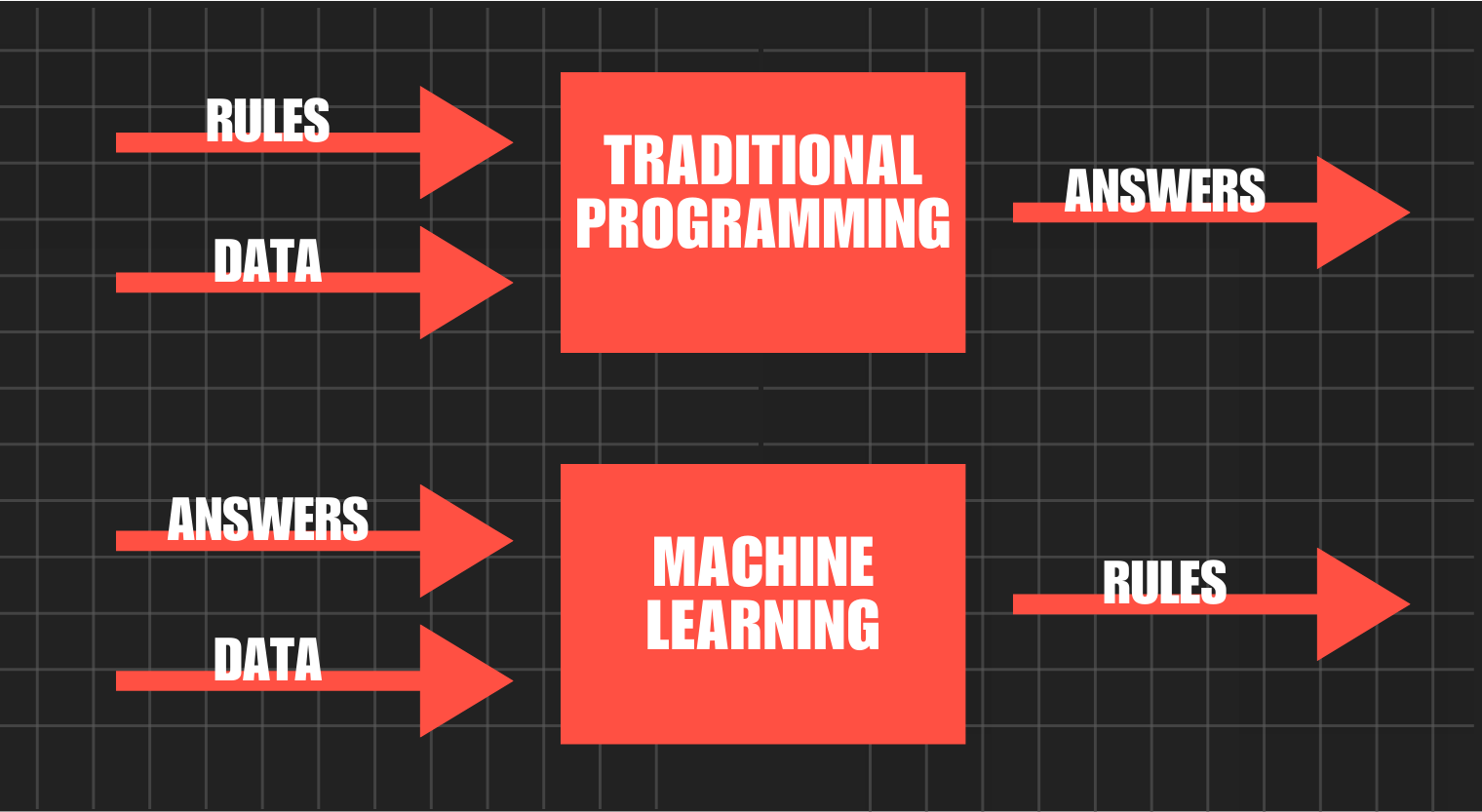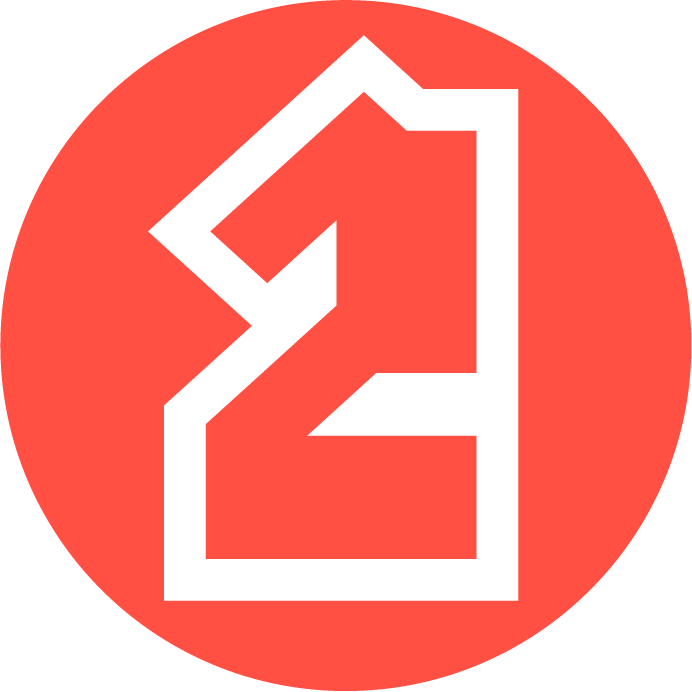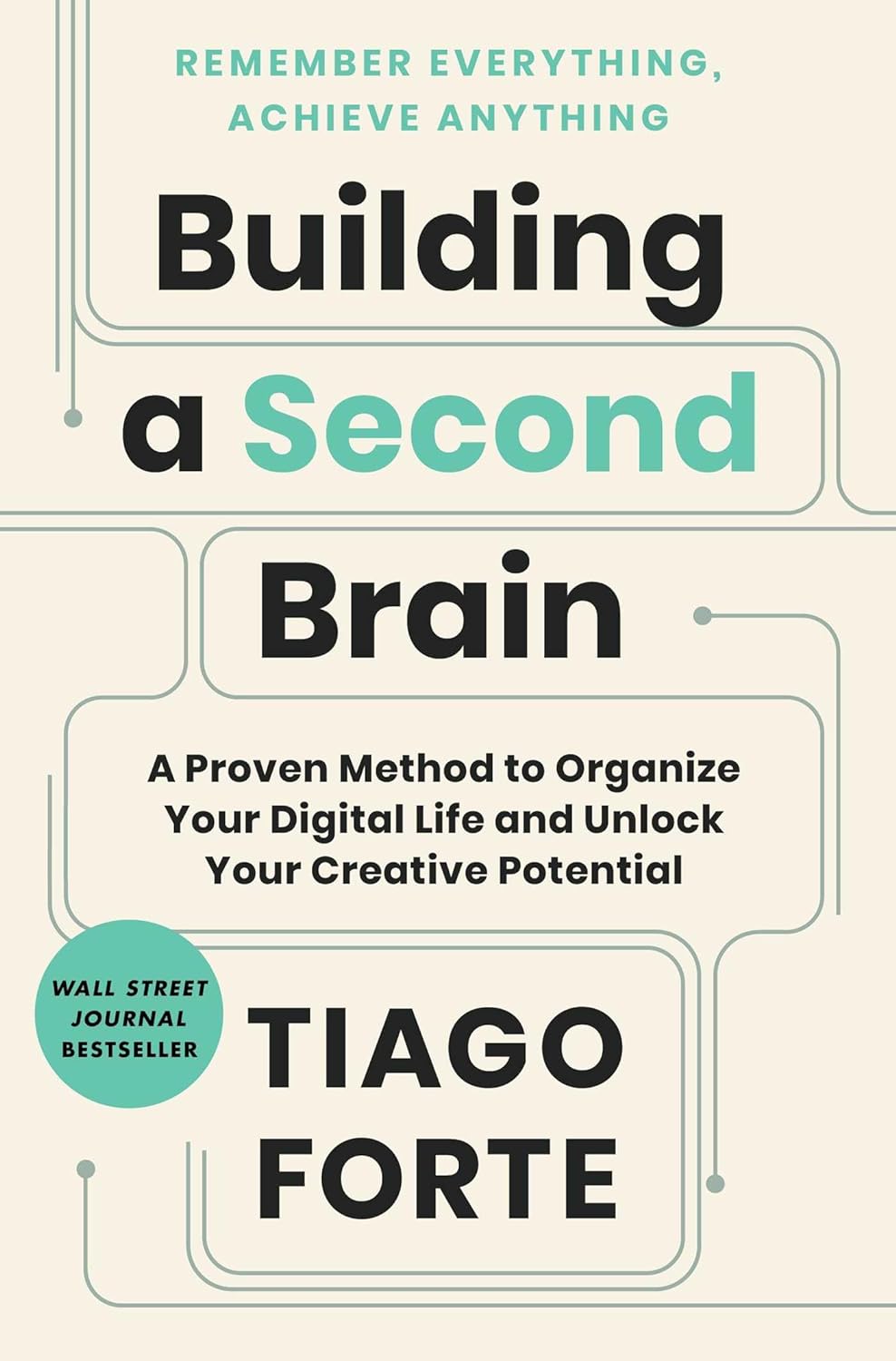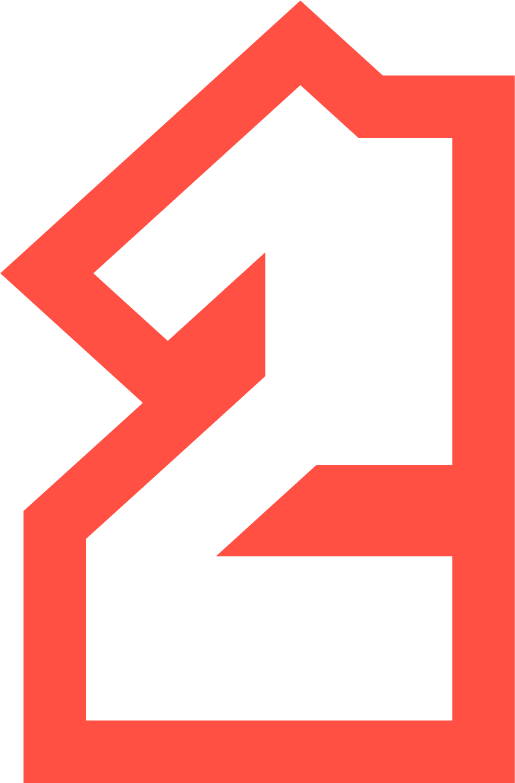How to Prevent AI from taking over: Intro
AI is on the horizon, and it’s unlike anything we’ve faced before. However, there are more similarities with past challenges than the pessimists might admit. These parallels, along with the rules of logic, will guide us and prevent AI from taking over.
Before you start preparing for the winter, you must understand the essence of AI and unravel how this transformation isn’t merely a takeover akin to machines replacing humans in industries.
There are multiple ways to conceptualize AI but the most relevant definition for us right now is this: AI is a system that learns from patterns, predicts outcomes, and generalizes knowledge to new situations.
Here’s a brief introduction to how AI works:
Why is it a big deal? Well, we humans work similarly by recognizing patterns from the real world, extracting the logic, and then generalizing it to use it.
Take the example of proofreading a piece of text (checking grammar and other writing issues), you’ve recognized a set of patterns (consciously or unconsciously) like correcting subject-verb agreement (“he does” instead of “he do”) and you use it to improve a piece of text.
The difference is that AI models are a lot faster at figuring out patterns from a set of data than us.
In contrast to traditional programming, where rules are explicitly written for a program to follow, AI models, particularly those using machine learning, autonomously extract rules and patterns directly from the provided data.

So, are we still valuable?
If it can learn skills faster, it can take our jobs. It can take away our ability to engage in critical thinking. Not only that but it can be used to keep us hooked on content. It can be used to fool us, manipulate us, and know us better than we know ourselves.
However, it’s not so gloomy if we, as individuals, can adapt. I know things are moving faster than our primitive brains are used to, but we can adapt if we are strategic and tactful in our actions.
Jump To Content:
Tactics: How to Prevent AI From Taking Over
Reframe the Situation: AI is Your Employee.
Did you know the term “computer” used to mean people doing calculations by hand?

So, rather than tackling calculations on your own, you could hire someone and pay them to do it – essentially buying yourself some time.
Similarly, instead of cooking yourself, you can just pay someone to do it, giving yourself more time for other stuff.
AI systems have been taking on jobs for a while now. Take Grammarly, for example. It’s learned English grammar patterns from the data it was trained on and can apply those patterns to predict (singular subject takes a singular verb) and improve new texts.
It can easily step in as a substitute for a human grammar checker that you might hire to proofread your written work.
Here’s the difference – the hourly rates for human proofreading hover between $31 and $45, depending on the content type. On Upwork, it’s around $25. Contrast that with Grammarly, charging $30 for a month, or if you go for the yearly plan, it can dip as low as $23/month.
And hey, there’s even a free plan.
So, now you’ve got a 24×7 proofreader at your disposal for just $1 a day. Two things to consider:
- If you’re a proofreader, you might notice a decrease in your workload, although it won’t completely disappear, as most people don’t fully trust AI models to be 100% accurate or simply don’t trust their own judgment outside their expertise.
After all, you’ve got to know what “good work” by AI means, whether in grammar, law, design, or writing. Laymen will struggle to judge accurately.
Plus, you can also tackle more tasks in less time using AI tools like Grammarly yourself. - If you’re not a proofreader, you can now easily hire one at a budget-friendly price (or even for free), sparing yourself the need to master the intricacies of English grammar to refine a piece of text.
It’s a Win-Win:
Leverage AI advancements in your field (say, proofreading) to boost productivity like an augmented worker. Plus, outsource tasks to AI models, tackling things without having to learn new skills – essentially hiring “employees” without hefty costs.
Numerous free AI tools are at your disposal for outsourcing tasks.
If you have the budget, opting for an expert to handle AI systems is a no-brainer. Keep in mind, outsourcing isn’t just about lacking skills; it’s also about
- Convenience and
- Purchasing valuable time.
Here are some examples of tools and the jobs you can outsource to them:
- Logo designer: LOGO.com
- Photo editor: Adobe Firefly
- Fact-checker: Perplexity.ai
- Narrator: ElevenLabs

Best Free AI Tools For Productivity
A regularly updated list of best-in-class (but free) AI productivity tools for various categories.
Debate AI Three Times a Week.
With increased access to knowledge, we’ve developed a habit of consuming bite-sized information like headlines and social media posts, preventing us from delving deep and fostering superficial thinking.
To counteract this, one strategy is to cut down on superficial information consumption and instead focus on detailed exploration.
This could mean fully immersing yourself in opinion pieces, reading more books, and engaging with long-form podcasts. Another effective approach is to spar with AI in discussions.
Here’s the deal: If I were to rank the types of thinking, it might look like this:
- Thinking alone
- Writing
- Debates
- Written debates
- Scientific experiments
Written debates are particularly beneficial for non-scientists. You don’t have to spot faults in your thinking; the other person does it for you. Plus, time isn’t a pressing concern – you can think and then respond.
Imagine this: Instead of just arguing with yourself to explore complex issues and think critically, why not spar with a smart entity like AI?
Engage in dynamic discussions, embracing the process of correction. It’s a way to have nuanced conversations and accelerate your learning curve.
Plan sessions to argue with large language models (like ChatGPT), treating it as a constructive debate. Gradually, delve into deeper layers, testing your beliefs with the help of AI.
Pro Tip:
Challenge your own beliefs, posing tough questions that you might need to defend in the future. If the AI’s response holds up, you’ll strengthen your arguments. If not, dive even deeper to enhance your understanding.
10 Minutes Every Day to Hunt New AI Tools.
Over time, generalists will have the upper hand. A few years ago, automating a task meant coding, but now even my parents can set reminders without understanding the technical nitty-gritty.
In various areas of life, you don’t have to be an expert to get by. While aiming for deep thinking, there’s also value in not having to be an expert in everything.
So, how do you make the most of this? Here’s how:
Devote 10–30 minutes daily to explore new AI tools and become adept at using them. Mastering AI is about honing your instruction-giving skills.
For instance, to create a cartoon of a cyborg opening a refrigerator, you don’t need to learn illustration; you need to give clear instructions.


To up your instructing game, having a basic understanding of different subjects—from nutrition to marketing to beekeeping—comes in handy.
For example, if you do not know coding, you won’t be able to give ChatGPT a clear instruction for writing code.

Recommended read: Deep Work by Cal Newport
“… they proceed to identify three specific groups that will fall on
the lucrative side of this divide and reap a disproportionate amount of the benefits of the Intelligent Machine Age.“
Also, expand your horizons by listening to a variety of podcasts and reading diverse articles and news sources. A broader knowledge base will make you better at giving precise instructions.
Create Something Every Day.
This tactic is similar to the previous one, but I want to emphasize it because I believe people might get stuck at consumption.
It’s important to move beyond consumption and start creating. Playing with AI tools is fine, but taking the time to create something for others to consume is the next level.
Here are a few ideas for blogs, social media posts, or videos:
- Create interesting charts and graphs using data obtained from AI language models (after fact-checking).
- Design futuristic vehicle images accompanied by descriptions.
- Generate historical images based on data obtained from language models (using Midjourney).
- Compose AI-generated music using tools like Mubert.
- Develop meditation sessions using tools like ChatGPT and use AI-generated voices to recite them.
- Produce daily news content using chatbots and utilize AI voices for narration, while adding subtitles using tools such as VEED. Upload the videos to platforms like YouTube.
- Find new AI tools and review them. You can also compile them in one place where people can come to learn more.
By engaging in creative projects like these, you not only master using AI tools but also learn to create.
Cross Check AI.
As AI becomes a big player in education and fact-checking, it’s crucial to question the source of information. Keep in mind that AI models gather data from human content, which may introduce biases.
One tactic is to take advantage of the competition between different AI systems.
When you’re checking stuff with AI, like asking Google Bard to fact-check what ChatGPT said, you get a fuller picture.
Considering insights from different angles helps you make smarter choices.
For example, I recently had ChatGPT help me come up with a catchy title for an article. To see if people would actually click on it, I asked Bard for its take, using its Google trends knowledge.
And if you want an extra layer of verification, free AI tools like Perplexity.ai or Phind can help you double-check the info.
Actively Look for Threats.
I’m eager to stay ahead of the curve on new AI advancements.
The developments, like Google testing its medical AI chatbot and the rising popularity of text-to-video tech, are pretty thrilling. AI in robotics is zooming ahead even faster than I expected.
Yet, with every innovation, there are new opportunities. Some things may become outdated, but there’s a chance to capitalize on it.
Example:
Picture a lawyer who doesn’t tap into ChatGPT. ChatGPT won’t stroll into the firm to replace them, but someone who embraces the tech could essentially do the work of 5 lawyers.
The key? Keeping up with the latest in AI advancements.
AI News is a great resource for your daily dose of reality check. To scare you, sure, but to eventually help you adapt the fastest.
Varun Mayya’s YouTube channel is also a good resource.
Stop Algorithms From Making Your Decisions.
There is a rise in short-form content consumption.
I recently observed my maybe 5-year-old cousin engrossed in YouTube shorts as if the internet might vanish tomorrow. Once the phone was taken away, he had nothing to do.
I can only imagine the immense power algorithms will have when advanced machine learning is used to determine our preferences. They will know our likes and dislikes better than we do (apps already do to some extent).
Remember:
When we consume content, we’re essentially outsourcing our thinking. Instead of actively engaging in critical thinking when exposed to new ideas, we let the creators think for us.
Unfortunately, relying solely on fragmented snippets and out-of-context quotes fosters superficial understanding and hinders critical thinking, preventing us from grasping the argument’s full weight and nuance.
To counteract this, I make a conscious effort to read books instead of reading Instagram quotes and listen to podcasts over 17-second clips taken from a 5-hour conversation.
Here are some tactics I use to avoid the consumption of short-form content:
- Delete social media apps from your phone, or consider deactivating your TikTok/Instagram account. Limit yourself to consuming YouTube content only on your computer. In case of an “emergency,” you can always access YouTube via your preferred mobile browser.
- Utilize the YouTube-shorts block extension on your YouTube account to restrict short-form content on your computer.
- Use a tool like Unhook to hide the YouTube homepage and only consume content from creators you have subscribed to, rather than allowing the algorithm to decide for you.
- Track your screen time on both your smartphone and computer to keep yourself aware of your usage. You can use browser extensions to monitor your browsing habits on your computer.
- Learn more about the neuroscience of dopamine and the factors that motivate us. Understanding how our brain responds to stimuli can help us find effective ways to stay motivated. Here are some techniques you can use, drawing from neuroscience, to maintain motivation.
Over time, you may find yourself appreciating long-form content more than ever before, and short-form content might leave you feeling unsatisfied.
Write to Think.
I hope I’ve convinced you that engaging in written debates with AI chatbots, such as ChatGPT, is a fruitful idea. However, there’s another equally essential tool: writing itself.
Writing is a powerful tool for thinking.
It’s easy to overlook the fact that the value lies not just in the end product but also in the process.
When you write, you can freely express your thoughts without worrying about anything else. This is how you learn to think. While you write, you are forced to think about the topic deeply.
Then, you can turn to ChatGPT for a quick grammar check.
This method often results in an essay that not only refines your thinking but also produces a piece you can proudly share.
Moreover, you can explore the potential of monetizing your writing by starting a blog and incorporating your work into it.
By recognizing the significance of both the writing process and the support of AI tools, you can elevate the quality of your writing and enrich your thinking.
Becoming a better thinker is one of the most crucial skills in preventing AI from taking over, and writing is the best tool to achieve this. Reading is also effective; check out the best books to enhance your reasoning skills here.
Prepare for The perspective era: Automate and Organize.
“We’ve transitioned from an era of information scarcity to one of information abundance,” suggests Tiago Forte, highlighting how today’s most valuable resource is perspective—the advantageous position you aim to secure amid information overload.
To navigate the era of information abundance, you need a system for organizing information—capturing it, organizing it, prioritizing it, and distilling it.
Tiago Forte has delved into this realm extensively, providing insights and strategies for maximizing productivity in his book “Building a Second Brain.”

Building a Second Brain by Tiago Forte
This guide helps you build a personal knowledge management system, known as a Second Brain. It covers idea identification, organization, and efficient retrieval, empowering you to regain control over your life and information.
Just imagine having to search for your headphones every day, spending 3–5 minutes each time. Now think about adding other things you need to find, like your phone, water bottle, documents, a quote, useful information, a specific photo, or even your clothes.
This whole process could easily eat up more than 7 hours a week. That’s where the importance of organization comes in.
Keep in mind, productivity boils down to accomplishing more in less time. If you’re not a pro at life organization, consider starting with the basics before delving into more intricate strategies.
You’ll need it to stay ahead of the curve and prevent AI from taking over, as things will change rapidly and information will flow faster. Organization and automation are your best allies in this endeavor.
If you frequently engage in certain tasks, minimize the resistance & time between you and those tasks. For example, you can name your photos in a way that allows you to find them with a single search.
Utilize a single app to store them, add location tags, and even employ AI-powered photo apps like Google Photos that can recognize objects and people in your photos, making them easily searchable.
Keep your gadgets in one designated place, and organize your life accordingly.
Planning your day effectively, in a way that aligns with your future goals, is also important to remove options that take up unnecessary space in your life.
Here are four tools to plan your life step-by-step:
To take it a step further, I recommend exploring automation. Automating tasks you perform daily can save you valuable time. For example, by using Zapier, you can automatically create the same task in Google Calendar when you create one in your to-do list app.
Zapier offers multiple ways to automate tasks, and you can start with the free version, which provides 100 tasks per month. Here are a few more automation ideas:
- Save new email attachments to Dropbox
- Save new Instagram photos to Dropbox.
- Send new YouTube videos in a channel to a Facebook Page.
- Tweet new YouTube Videos.
- Share new Facebook Page posts on Pinterest.
By embracing automation tools like Zapier, you can further enhance your productivity and efficiency.
Here’s another simpler example: There’s a tool called Espanso, which functions as a text expander.
It allows you to replace any keyword of your choice with a longer text, eliminating the need to type it repeatedly. I frequently request ChatGPT to “fix grammar:” before pasting my written content. With Espanso, I can set it up to replace a shortcut like “xcx” with “fix grammar”.
Conclusion.
To prevent AI from taking over, we can each play a role in resisting its dominance.
While it’s true that AI will make some people less valuable, you don’t have to be one of those. Instead, you can be like an augmented human who uses new AI systems to maximize their value.
While the rise of AI is inevitable, the future can be shaped by individuals who responsibly and ethically utilize its potential. By ensuring that those with good intentions lead the way, we can pave the path to a different future—best of luck.
Subscribe to get more tools and tactics right in your inbox. I’ll be posting more notes to myself in my pursuit of making my vague goals more concrete.






